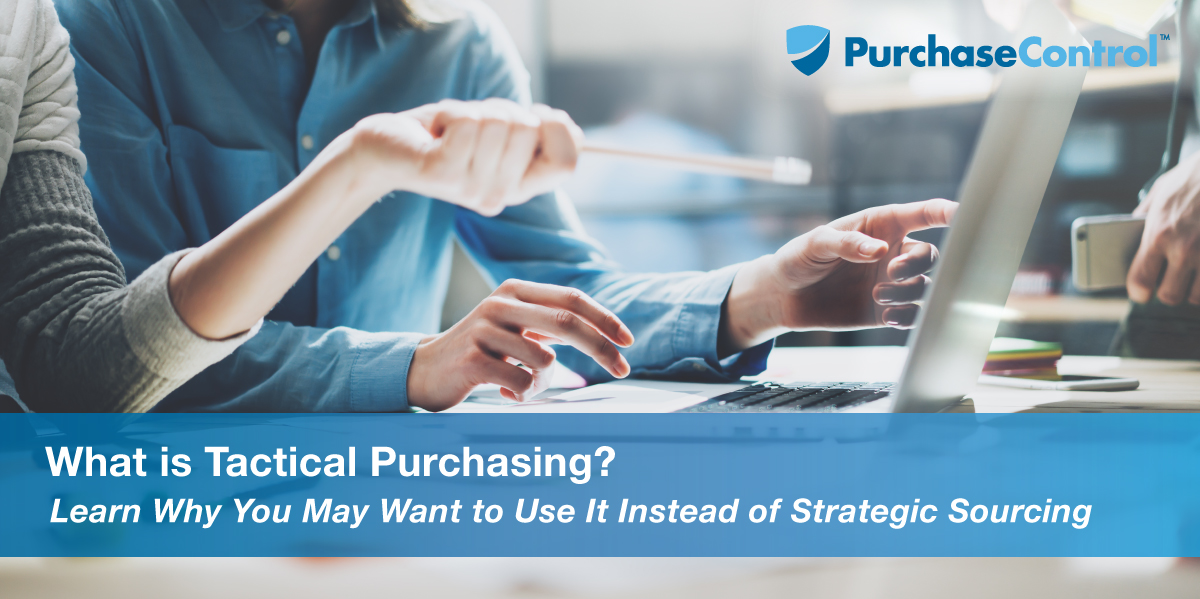What is Tactical Purchasing?
Tactical purchasing is based on the short term, transactional activity that you often find in small and medium manufacturing companies. It uses a routine approach that is often reactive, when it comes to purchasing materials and supplies. It involves using fast quote and order processes to keep production running smoothly.
Though the reactive approach is a bit scary for some, it’s worth noting everything is well-managed internally to make sure the business has all the materials they need at the right price and the right time.
What is Strategic Sourcing?
Strategic sourcing, also known as strategic procurement, is the more long-term strategy, using a systematic approach to obtain the things the business needs, focusing on the lowest risk to the supply line, and the lowest total cost of ownership, or TCO, possible. It’s more about anticipating the future needs of an organization, supply chain relationship management and choosing suppliers to work with based on factors other than price and availability.
Tactical vs. Strategic Purchasing
Tactical purchasing doesn’t focus on the entire company’s needs, and it doesn’t aim to truly understand how a vendor’s capabilities could support the organization’s larger needs. It focuses on the production department’s needs, while strategic sourcing looks at the big picture.
“Looking at this comparison, it’s easy to see strategic sourcing is the best way to go, but there are many reasons why companies opt for tactical purchasing instead.”
When Does Tactical Purchasing Make Sense?
Picture this:
A medium size manufacturing company, where the purchasing department has the ability to use nearly any of the suppliers in their supply base. Generally, buyers in this position will place their orders with the company that has the lowest price and best delivery time. This is what happens with many purchasing departments who don’t have the luxury of time.
Managing the day-to-day manufacturing operations is drastically different than managing long-term strategic responsibility. Sometimes, buyers lack the procurement platform or ERP software, or possess the higher skill set required to make the switch from tactical purchasing to strategic sourcing. As such, their first priority is keeping production lines open and running. And of course, tactical sourcing is the best choice in situations like these. It’s the appropriate approach to take, even though procurement professional don’t consider it a best practice.
Compare that to this scenario:
Another business has a procurement department with access to a full suite of ERP technology to handle everything, along with dedicated commodity teams. Procurement at this organization chooses from a smaller pool of vendors they’ve researched and designated as preferred suppliers, based on their ability to meet the company’s expectations and needs.
Because the company has the IT support to run spend reports for the entire business, perform spend analysis, and conduct the necessary market research on commodities for supply and demand, they are better able to negotiate total cost of ownership, while considering quality, lead time, delivery, and other terms.
In this approach, buyers rely solely on the approved suppliers. With this particular purchasing organization, it is the right approach to take.
Organizations also have the option to create a hybrid approach using both affordable ERP technology with a small team of commodity specialists. Separating the responsibilities ensures there is enough operational support to keep things moving, while there is a strategic focus on the most important commodities for the business. Depending on the situation, the procurement department can find the right balance between the two strategies to create the best possible success for the overall business.
You’ll find that after comparing strategic sourcing to tactical purchasing, the tactical approach seems to be the less effective purchasing process. But, we’re not talking about what’s better in the general sense, we’re talking about what’s best for your business. There’s no one-size-fits-all solution, which is why using the sourcing strategy that works best for you, or creating a hybrid of the two, is often the best course of action.
PurchaseControl can help you whether you use strategic sourcing or tactical purchasing.
Find Out How








